Companies of all sizes rely heavily on IT systems to operate efficiently. That’s why when technical issues arise, fast and effective resolution is mission-critical.
In the modern IT environment, two essential components ensure business continuity: the help desk and the network operations center (NOC). While both are vital to IT support and service delivery, they fulfill different roles. It’s common to hear the terms used interchangeably, but they serve distinct functions with unique responsibilities.
Understanding the differences between a help desk and a NOC allows companies to structure their IT operations more effectively, improving service delivery and the overall user experience.
Understanding the Help Desk
The help desk acts as the frontline support team, serving end-users directly. When employees experience technical difficulties—whether with their computer, email access, application usage, or login credentials—the help desk is typically their first call for assistance. Its primary role is to ensure that users remain productive by helping them resolve tech-related issues quickly and efficiently.
Core Characteristics of a Help Desk:
– Focus: Resolving user-specific technical problems and delivering excellent customer service.
– Scope: Handles individual user issues, including hardware malfunctions, software glitches, account access problems, and peripheral setups.
– Approach: Reactive by nature, responding to support tickets or requests as they come in.
– Interaction: Directly engages with users through phone, chat, email, or a support ticketing system.
– Goal: Restore the user’s productivity with minimal downtime.
– Tools: Uses a range of resources such as remote access tools, ticketing platforms, knowledge bases, and standard diagnostic utilities.
Defining the Network Operations Center (NOC)
In contrast, the NOC operates mostly behind the scenes, focusing on the overall health and performance of an organization’s IT infrastructure. Its responsibilities include monitoring and maintaining network connectivity, server health, application performance, data backup integrity, cybersecurity, and system availability. Rather than addressing individual user concerns, the NOC takes a system-wide approach to ensure everything runs smoothly.
Core Characteristics of a NOC:
– Focus: Maintaining infrastructure performance, uptime, and security.
– Scope: Responsible for monitoring network operations, server performance, cloud services, firewalls, backups, and critical software systems.
– Approach: Proactive strategy—utilizing specialized tools to identify and address issues before they impact users.
– Interaction: Rarely interfaces directly with end-users; communicates through system alerts and collaboration with IT teams.
– Goal: Provide seamless IT operations and reduce system-wide disruptions.
– Tools: Leverages advanced monitoring systems, automated alerts, log analyzers, cybersecurity tools (SIEM), and performance metrics software.
Help Desk and NOC Collaboration
While the help desk and NOC serve different purposes, they are interdependent. Their collaboration helps businesses manage IT operations more effectively and ensures both immediate concerns and larger-scale infrastructure needs are met.
Examples of Help Desk and NOC Collaboration:
– Escalation: If multiple employees report being locked out of a shared platform, the help desk might escalate the issue to the NOC, assuming a deeper network or server issue.
– Communication: If the NOC detects an impending server failure or security threat, it will alert the help desk so they can notify users and manage expectations.
– Root Cause Analysis: Help desks may log recurring issues that point to a pattern; the NOC can then investigate the core infrastructure to determine the cause and implement a system-level fix.
Why Understanding the Difference Matters
Appreciating the distinction between help desks and NOCs enables more strategic IT staffing, better vendor management, improved end-user support, and more resilient technology systems.
By dividing responsibilities—end-user support to the help desk and infrastructure monitoring to the NOC—companies enjoy faster responses to both individual and larger-scale problems. This dual structure not only strengthens IT support but also adds a layer of protection to safeguard overall business operations.
Partnering with Cytranet
Recognizing how these roles complement each other is the first step. But maximizing the value of IT requires a strategic partner who can design and manage both.
As a managed service provider (MSP), Cytranet offers comprehensive IT management services, helping companies improve operational performance while reducing costs. Whether you have internal staff or not, Cytranet can enhance your technology ROI with proactive support and targeted strategies.
With Cytranet, businesses benefit from:
– 24/7 monitoring and infrastructure management via our expert NOC services
– Responsive help desk support that keeps your team productive
– A Fractional CIO service to guide your technology decisions for long-term growth
– Enhanced cybersecurity, data backup, and disaster recovery planning
Let Cytranet serve as an extension of your team—optimizing your IT, improving uptime, and delivering a seamless experience to your employees, vendors, and clients.
Schedule a meeting today to learn more about how Cytranet can strengthen your IT foundation and empower your organization to thrive.


